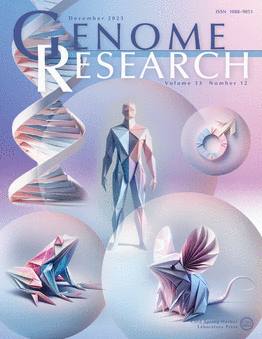Epigenetic drift score captures directional methylation variability and links aging to transcriptional, metabolic, and genetic alterations
IF 5.5
2区 生物学
Q1 BIOCHEMISTRY & MOLECULAR BIOLOGY
引用次数: 0
Abstract
Epigenetic drift refers to the gradual and stochastic accumulation of epigenetic changes, such as DNA methylation variability, with advancing age. Although increasingly recognized for its potential role in aging biology, its extent, biological significance, and population specificity remain insufficiently characterized. Here, we present the first comprehensive epigenome-wide drift study (EWDS) in a large Chinese cohort (n = 3,538), with replication in two independent Chinese (total n = 1,467) and two European cohorts (total n = 956), to investigate the scale and relevance of epigenetic drift across populations. Through simulation, we identified White's test as the most powerful method among four alternatives for detecting age-associated methylation variability. Our EWDS revealed that 10.8% (50,385 CpGs) of sites on the 850K EPIC array exhibited epigenome-wide significant drift, with 99% showing increased interindividual variability (positive drift) and 1% showing decreased variability (negative drift). Integration with single-cell RNA-seq data demonstrated that positive drift-CpGs are associated with increased transcriptional variability and upregulation in specific cell types, while negative drift-CpGs exhibit the opposite effect. We developed epigenetic drift scores (EDSs) to quantify individual drift burden; these scores are strongly age-associated and correlate with lipidomic profiles and clinical aging indicators. Longitudinal data confirm within-individual accumulation of drift over time. Finally, a GWAS of EDS identified genetic determinants of drift magnitude, including heritable loci (e.g., ASTN2, SOCS5). Collectively, these findings establish epigenetic drift as a pervasive, directional, and biologically meaningful feature of human aging.表观遗传漂变得分捕获定向甲基化变异性,并将衰老与转录、代谢和遗传改变联系起来
表观遗传漂变是指随着年龄的增长,DNA甲基化变异等表观遗传变化的逐渐和随机积累。尽管人们越来越认识到它在衰老生物学中的潜在作用,但它的范围、生物学意义和群体特异性仍然没有得到充分的描述。在此,我们首次在一个大型中国队列(n = 3538)中进行了全面的全表观基因组漂移研究(EWDS),并在两个独立的中国队列(总n = 1467)和两个欧洲队列(总n = 956)中进行了重复研究,以调查不同人群间表观遗传漂移的规模和相关性。通过模拟,我们确定White的测试是检测年龄相关甲基化变异性的四种替代方法中最有效的方法。我们的EWDS显示,850K EPIC阵列上10.8% (50385 CpGs)的位点表现出表观基因组范围内的显著漂移,其中99%表现出个体间变异性增加(正漂移),1%表现出变异性减少(负漂移)。与单细胞RNA-seq数据的整合表明,在特定细胞类型中,阳性漂移- cpgs与转录变异性增加和上调相关,而阴性漂移- cpgs则表现出相反的效果。我们开发了表观遗传漂变评分(EDSs)来量化个体漂变负担;这些分数与年龄密切相关,并与脂质组学概况和临床衰老指标相关。纵向数据证实了随时间的漂移在个体内部的累积。最后,EDS的GWAS确定了漂移大小的遗传决定因素,包括遗传位点(例如,ASTN2, SOCS5)。总的来说,这些发现确立了表观遗传漂变是人类衰老的普遍、定向和有生物学意义的特征。
本文章由计算机程序翻译,如有差异,请以英文原文为准。
求助全文
约1分钟内获得全文
求助全文
来源期刊

Genome research
生物-生化与分子生物学
CiteScore
12.40
自引率
1.40%
发文量
140
审稿时长
6 months
期刊介绍:
Launched in 1995, Genome Research is an international, continuously published, peer-reviewed journal that focuses on research that provides novel insights into the genome biology of all organisms, including advances in genomic medicine.
Among the topics considered by the journal are genome structure and function, comparative genomics, molecular evolution, genome-scale quantitative and population genetics, proteomics, epigenomics, and systems biology. The journal also features exciting gene discoveries and reports of cutting-edge computational biology and high-throughput methodologies.
New data in these areas are published as research papers, or methods and resource reports that provide novel information on technologies or tools that will be of interest to a broad readership. Complete data sets are presented electronically on the journal''s web site where appropriate. The journal also provides Reviews, Perspectives, and Insight/Outlook articles, which present commentary on the latest advances published both here and elsewhere, placing such progress in its broader biological context.
 求助内容:
求助内容: 应助结果提醒方式:
应助结果提醒方式:


